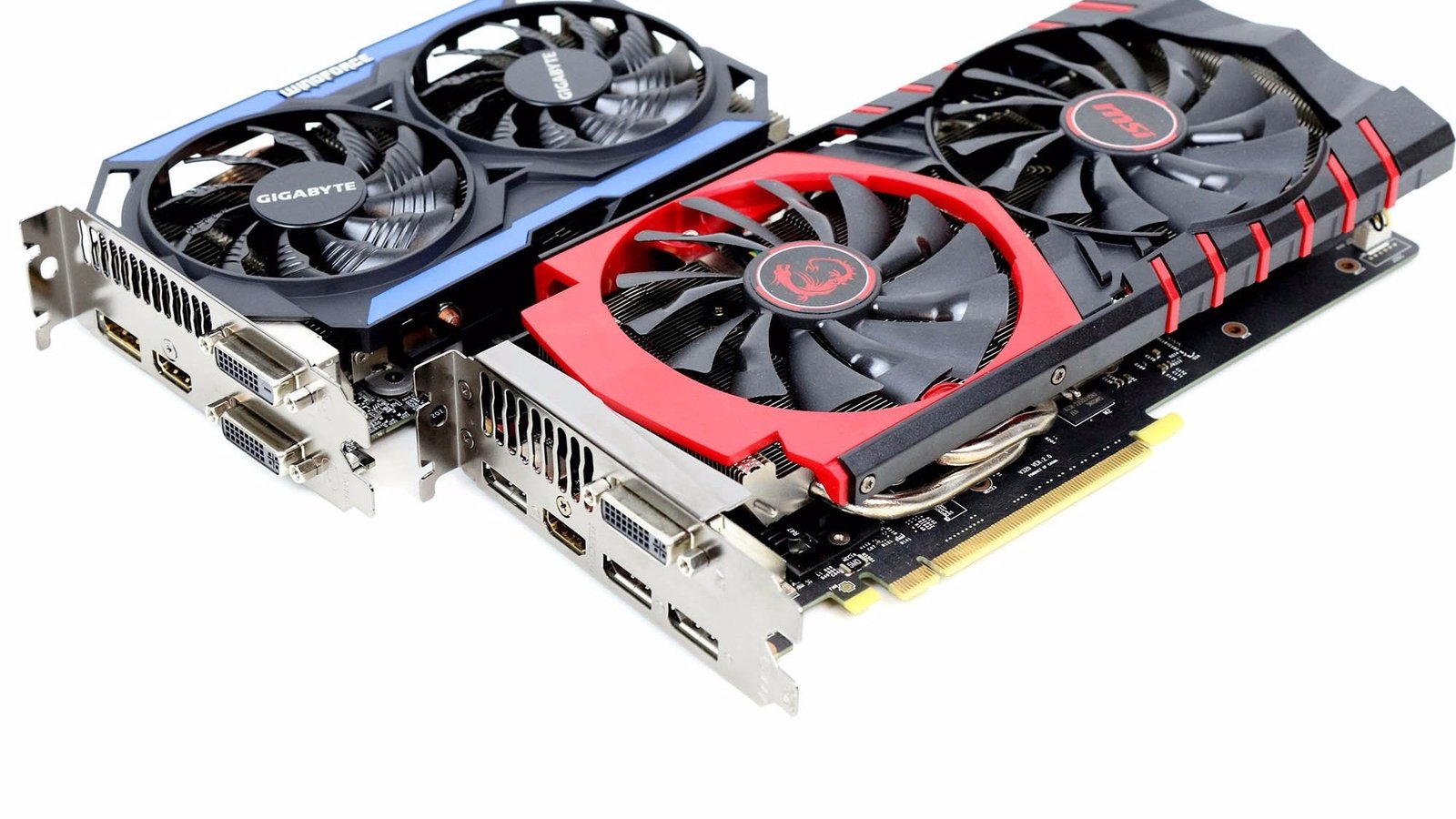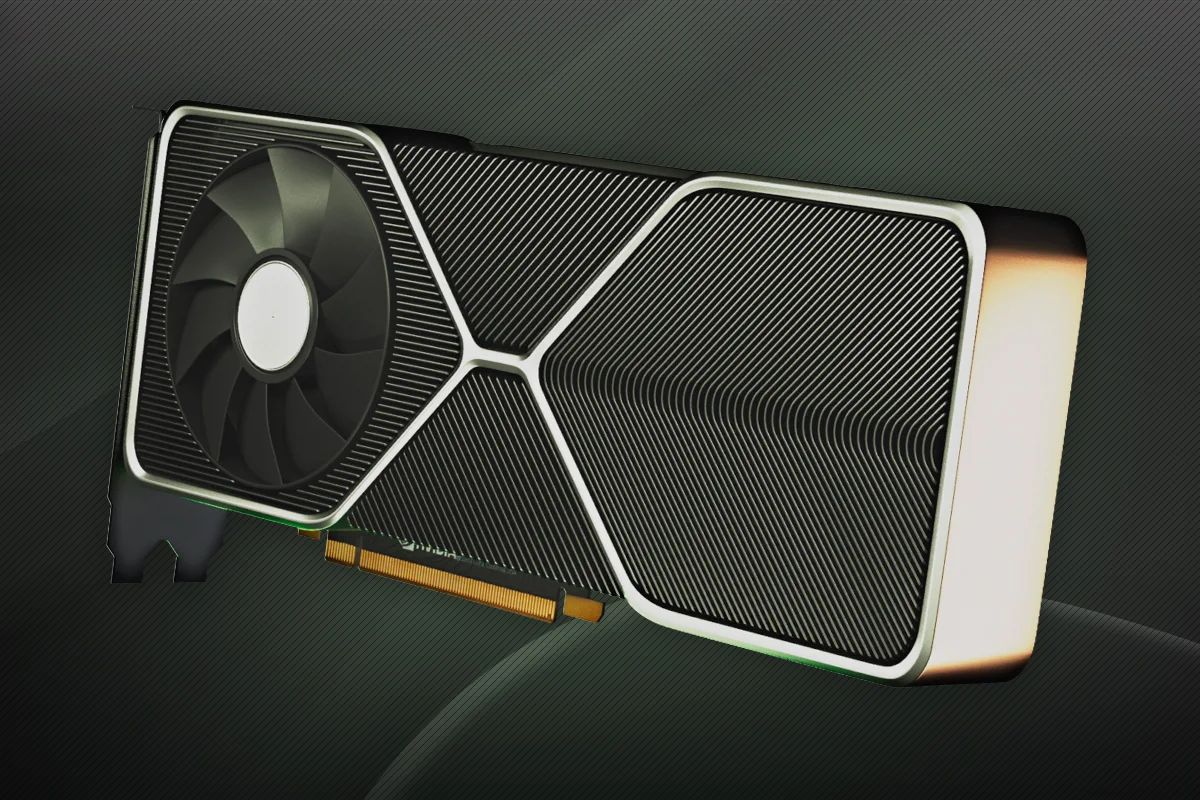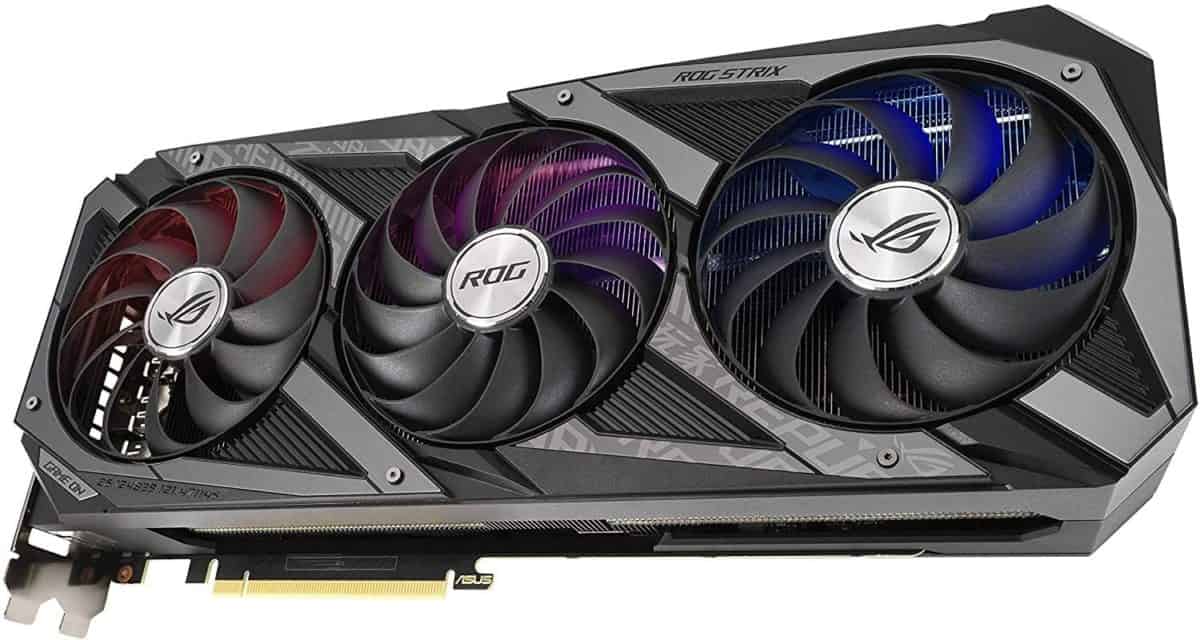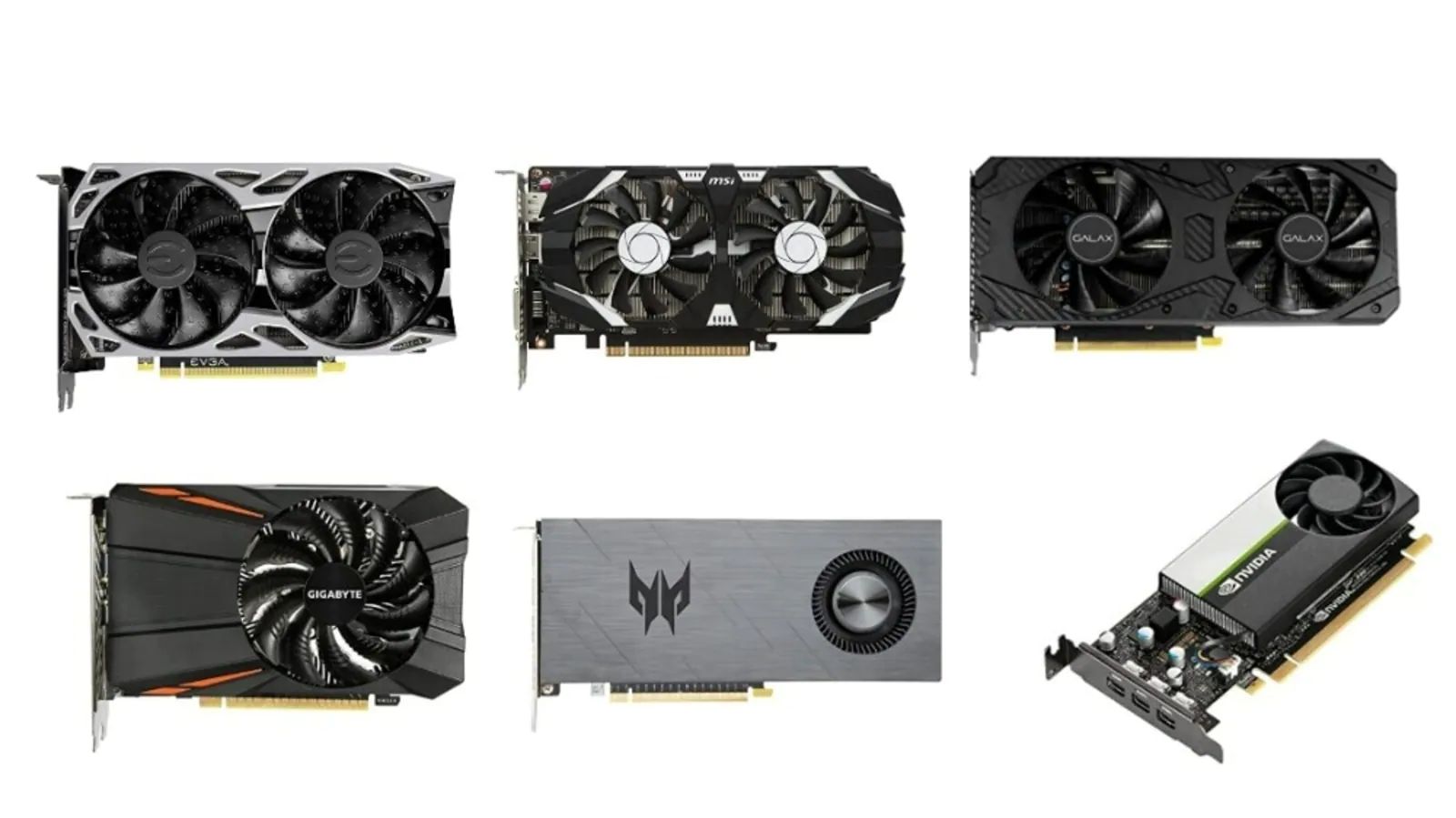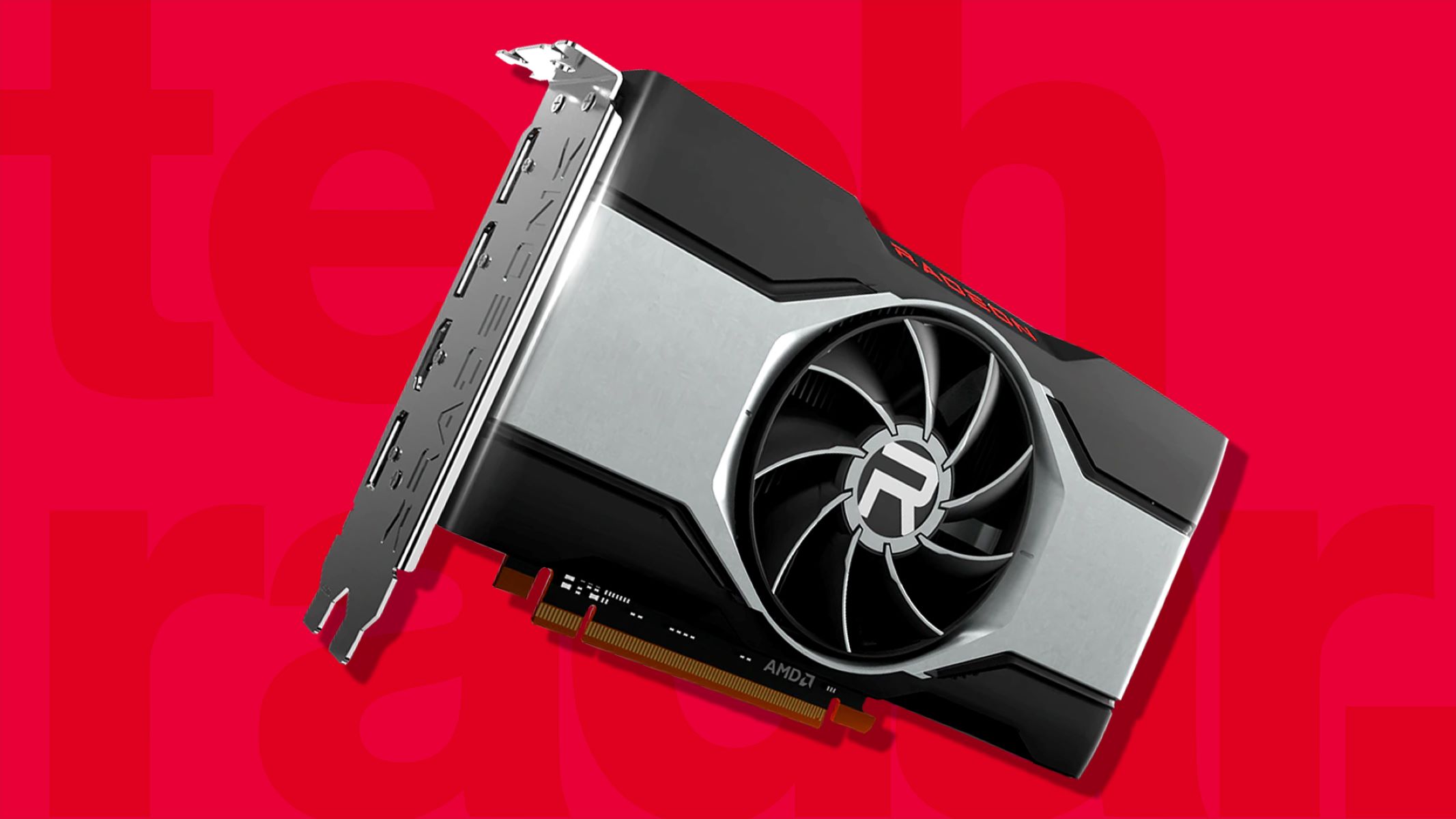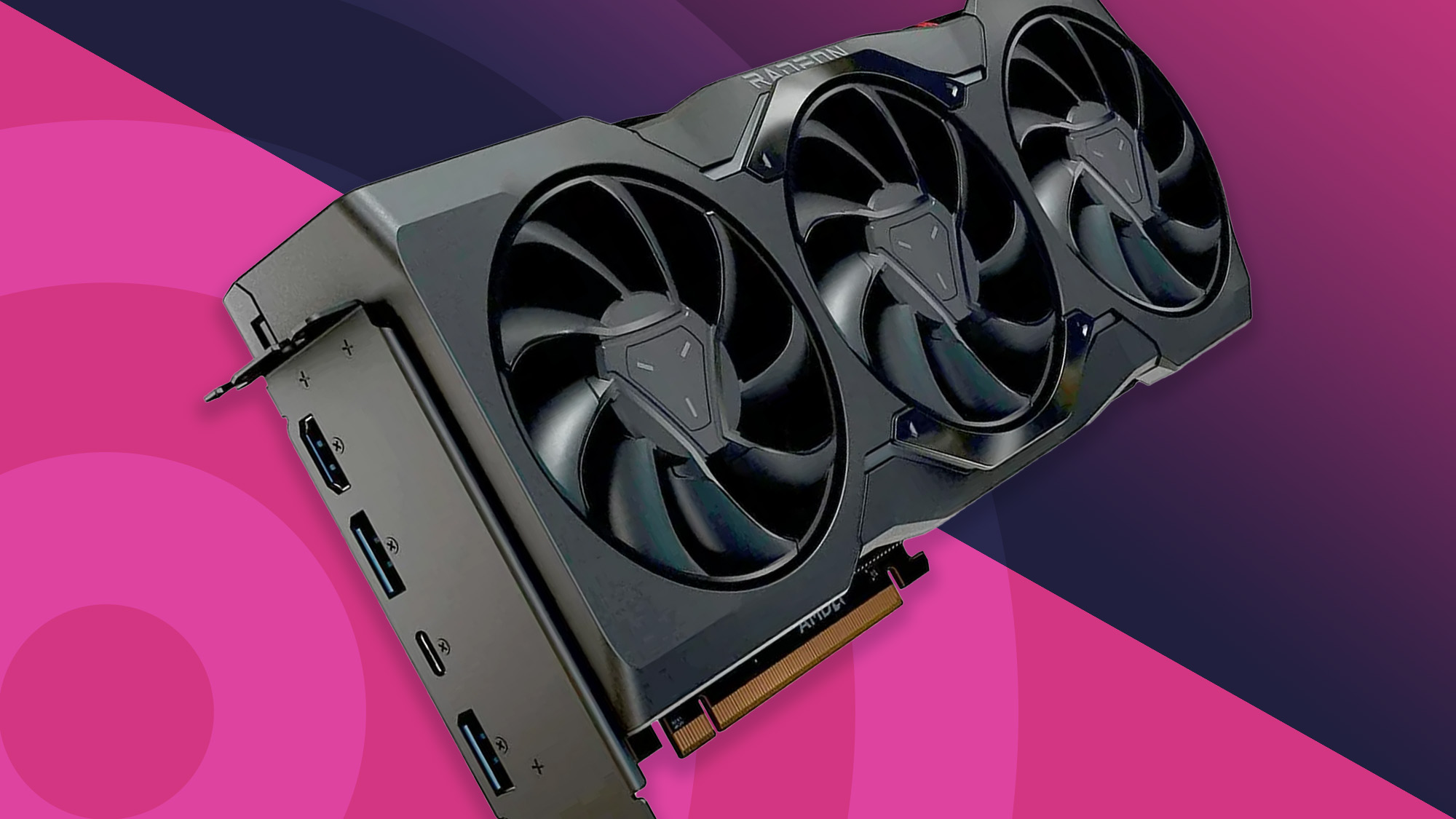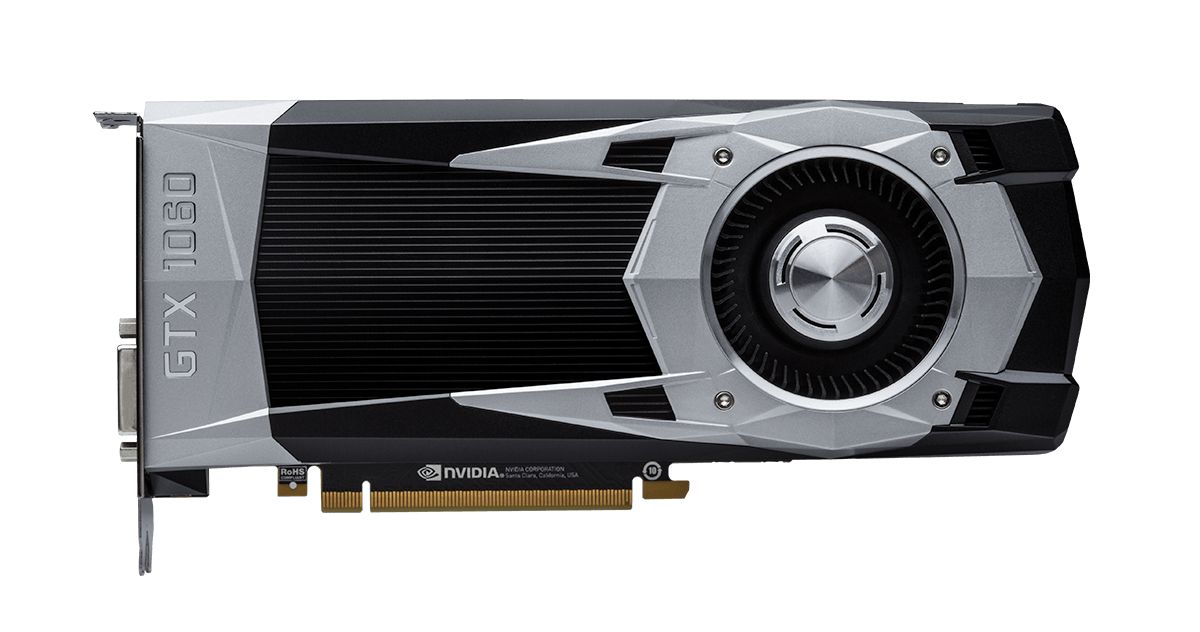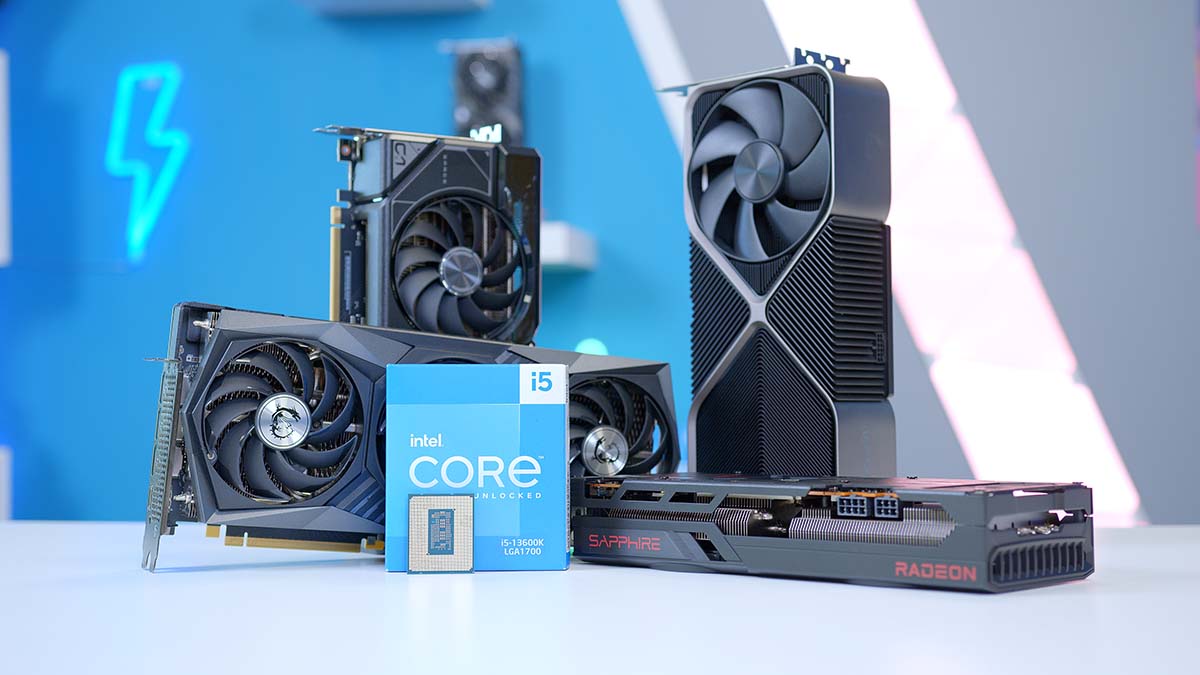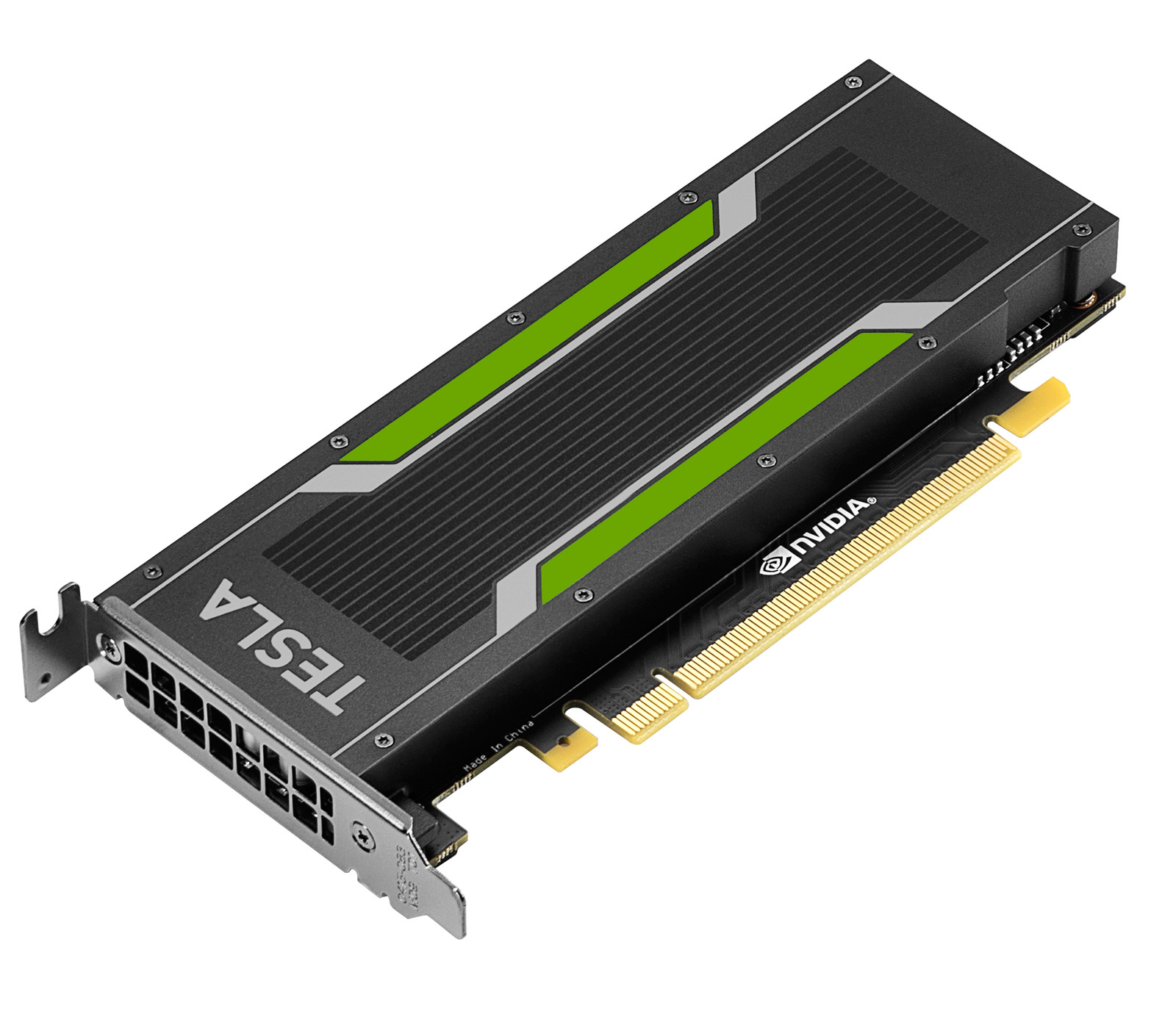Introduction
Welcome to the world of graphics cards, where the power and performance of your computer’s visuals come to life. If you’re new to the world of gaming or design, you may have come across the terms “2GB” and “4GB” when shopping for a graphics card. But what do these numbers actually mean, and is there a significant difference between them?
Graphics cards are essential components of modern computers, responsible for processing and rendering the images and videos you see on your screen. They have their own dedicated memory known as Video RAM (VRAM), which stores the graphics data and allows for quick access to the various textures, shaders, and models utilized in rendering.
The VRAM capacity of a graphics card plays a crucial role in its performance and ability to handle complex graphics-intensive tasks. The most common memory sizes you’ll encounter in the market are 2GB and 4GB. These numbers refer to the amount of VRAM available on the graphics card, and they can have a significant impact on your gaming experience or professional design work.
In this article, we’ll delve into the difference between 2GB and 4GB graphics cards, and explore how their memory capacity affects their performance and suitability for different tasks. By the end, you’ll have a clearer understanding of which option would be more suitable for your needs.
What is a Graphics Card?
Before we dive into the specifics of memory capacity, let’s start by understanding what a graphics card actually is. A graphics card, also known as a video card or GPU (Graphics Processing Unit), is a specialized hardware component that helps your computer produce and display images and videos on a monitor. It works by taking the raw data from the CPU (Central Processing Unit) and transforming it into signals that the monitor can understand, resulting in stunning visual output.
Modern graphics cards are equipped with their own processors and memory, allowing them to handle the demanding tasks required for rendering high-quality visuals. They have dedicated circuitry designed to accelerate the creation and manipulation of images, making them faster and more efficient than the integrated graphics found in most CPUs.
The primary function of a graphics card is to handle the complex calculations and rendering required for gaming, video editing, 3D modeling, and other graphics-intensive applications. It is especially important for gamers who require smooth and lag-free gameplay, as the graphics card determines the quality and performance of the visuals displayed on the screen.
In addition to processing power, graphics cards also play a crucial role in determining the quality and resolution of the visuals produced. Higher-end graphics cards are often equipped with advanced features such as ray tracing, anti-aliasing, and higher memory bandwidth, allowing for more realistic and immersive gaming experiences.
Now that we have a basic understanding of graphics cards, let’s explore the role of memory in these powerful components and how it affects their performance.
Understanding Memory in Graphics Cards
Graphics cards utilize their own dedicated memory known as Video RAM (VRAM) to store and access the graphics data required for rendering visuals. Think of VRAM as a temporary workspace where the graphics card can quickly access and manipulate textures, shaders, and models before sending them to the monitor for display.
VRAM plays a crucial role in the performance of a graphics card, as it directly affects the speed at which the card can process and deliver the visuals. The higher the VRAM capacity, the more data the graphics card can hold and access at any given time, resulting in smoother and faster performance.
Moreover, VRAM also determines the resolution and quality of the visuals that a graphics card can handle. High-resolution gaming, graphics-intensive applications, and multi-monitor setups require more VRAM to store and process the vast amount of data involved. Insufficient VRAM may result in decreased performance, lower resolution, and even graphical artifacts.
It is important to note that VRAM is different from the system memory (RAM) that your computer uses for general computing tasks. While the system memory provides the overall computational power for your entire system, VRAM is specifically designed for handling the real-time demands of graphics-intensive applications.
Graphics cards typically come with different types of VRAM, such as GDDR6, GDDR5, or GDDR4. These different types have varying performance characteristics and memory bandwidth, which can affect the overall performance of the graphics card. It’s always a good idea to check the specifications and performance benchmarks of the VRAM on a graphics card before making a purchase.
Now that we have a basic understanding of VRAM and its importance in graphics cards, let’s explore how the numbers 2GB and 4GB relate to the memory capacity of these components.
What Does “2GB” and “4GB” Refer To?
When shopping for a graphics card, you may often come across terms like “2GB” or “4GB” referring to the memory capacity of the card. These numbers represent the amount of VRAM (Video RAM) available on the graphics card.
VRAM is a type of memory that is specifically allocated for graphics data and is separate from your computer’s main system memory (RAM). It is dedicated solely to storing and manipulating the textures, models, and shaders required for rendering graphics.
So, when you see a graphics card labeled as “2GB,” it means that it has 2 gigabytes of VRAM, while a “4GB” graphics card has 4 gigabytes of VRAM.
But what do these numbers actually mean in terms of performance and capability? In simple terms, a higher VRAM capacity allows the graphics card to store and access more data simultaneously, enabling it to handle more complex and graphically demanding tasks.
For example, if you’re playing a game with high-resolution textures, intricate character models, and detailed environments, a graphics card with a larger VRAM capacity will be able to hold and process all that data more efficiently, resulting in smoother gameplay and better visual quality.
However, it’s important to note that VRAM capacity is not the sole factor determining the performance of a graphics card. Other factors such as the GPU’s processing power, memory bandwidth, and overall architecture also play a significant role.
That being said, the VRAM capacity is particularly important when it comes to handling higher resolutions, multi-monitor setups, and graphics-intensive tasks such as 3D modeling, video editing, and rendering.
Now that we understand what “2GB” and “4GB” mean in relation to graphics card memory, let’s explore how this memory capacity affects the overall performance and when it is appropriate to choose a 2GB or 4GB graphics card.
How Does Memory Capacity Affect Performance?
The memory capacity of a graphics card, represented by the numbers “2GB” or “4GB,” plays a crucial role in its overall performance and capability to handle graphics-intensive tasks. The VRAM capacity directly impacts how effectively the graphics card can store, access, and manipulate the vast amount of data involved in rendering high-quality visuals.
A larger VRAM capacity allows the graphics card to store more textures, models, and shaders at any given time. This means that the card can handle more complex scenes and higher-resolution textures without needing to constantly swap data in and out of the VRAM. As a result, a graphics card with greater VRAM capacity can deliver smoother gameplay, better visual quality, and improved performance.
When a graphics card with insufficient VRAM is pushed to render beyond its capacity, it may lead to performance issues such as stuttering, lag, or even crashes. The card may need to offload data from VRAM to system memory, which is slower and can cause delays in rendering frames. This can especially be apparent when running graphically demanding games or applications with high-resolution textures, complex simulations, or extensive use of shading effects.
On the other hand, if you’re using a graphics card with more VRAM capacity than what is required for your particular task or application, it will not necessarily offer a significant performance advantage. For example, if you’re primarily gaming at 1080p resolution with medium to high settings, a 2GB graphics card can generally handle the workload without any issues.
However, it’s important to note that certain games or applications, especially those designed with advanced graphics and higher resolutions in mind, may benefit from having a higher VRAM capacity. In these cases, a 4GB graphics card might provide better future-proofing and ensure smooth performance even as more demanding games and applications are released.
Ultimately, the ideal VRAM capacity for your graphics card depends on your specific needs and intended usage. Evaluate the requirements of the tasks and applications you plan to run and consider your desired graphic settings and resolutions. This will help you determine whether a 2GB or 4GB graphics card would be more suitable for your needs.
Next, let’s explore situations where a 2GB graphics card would be appropriate and when it would be more beneficial to opt for a 4GB graphics card.
When Should You Choose a 2GB Graphics Card?
A 2GB graphics card can be a suitable choice for certain scenarios, depending on your needs and intended usage. Here are a few situations where a 2GB graphics card could be appropriate:
- 1080p Gaming: If you primarily play games at 1080p resolution and are satisfied with medium to high graphic settings, a 2GB graphics card can handle the workload without any significant issues. Most current games at this resolution do not require a large VRAM capacity for smooth gameplay.
- Casual Gaming: If you’re a casual gamer who plays non-demanding titles or older games, a 2GB graphics card should suffice. These games generally have lower graphical requirements and don’t utilize large amounts of VRAM.
- Graphic Design: For basic graphic design work, such as creating illustrations or editing photos, a 2GB graphics card can handle the tasks efficiently. However, if you’re working with complex 3D models or high-resolution textures, you may benefit from a graphics card with a larger VRAM capacity.
- General Use: If your computer usage mainly involves web browsing, content consumption, and productivity tasks, a 2GB graphics card is more than enough for these purposes. Integrated graphics on modern CPUs also offer similar capabilities.
- Budget-Friendly Option: If you’re on a tight budget or looking for a more cost-effective option, a 2GB graphics card can offer good performance for its price. It is often more affordable compared to higher VRAM capacity options.
It’s important to note that the above scenarios are general guidelines, and individual game or application requirements can vary. Always check the recommended system requirements for the specific games or applications you plan to use to ensure compatibility with a 2GB graphics card.
Next, let’s explore situations where a 4GB graphics card would be more advantageous and when it may be worth considering an upgrade.
When Should You Choose a 4GB Graphics Card?
A 4GB graphics card can be a wise choice in certain situations where a larger VRAM capacity can provide added benefits. Here are a few scenarios where a 4GB graphics card would be advantageous:
- High-Resolution Gaming: If you plan to game at resolutions higher than 1080p, such as 1440p or 4K, a 4GB graphics card would be more suitable. The increased VRAM capacity allows for smoother gameplay and better visual quality at these higher resolutions.
- VR Gaming: Virtual Reality (VR) gaming typically requires more VRAM due to the increased demand for rendering two separate viewpoints simultaneously. A 4GB graphics card can provide better performance and a more immersive VR experience.
- Graphics-Intensive Applications: If you work with graphically demanding applications such as 3D modeling, animation, video editing, or rendering, a 4GB graphics card can offer improved performance and allow for smoother workflow by providing ample VRAM to handle the complex data involved.
- Future-Proofing: Investing in a 4GB graphics card ensures that you have sufficient VRAM for upcoming games and applications that may have higher graphical requirements. This can provide longevity and ensure that your graphics card remains capable of handling new releases for a longer period of time.
- Multi-Monitor Setups: If you plan to use multiple monitors for a more extensive desktop workspace or immersive gaming experience, a 4GB graphics card can handle the additional VRAM requirements of running multiple displays simultaneously without sacrificing performance.
It’s important to consider your specific needs and the requirements of your intended usage when deciding whether to choose a 4GB graphics card. Keep in mind that a larger VRAM capacity alone does not guarantee better performance, and other factors such as the GPU’s processing power and memory bandwidth also play a significant role.
Lastly, remember to review the system requirements of the games or applications you plan to use to ensure compatibility with a 4GB graphics card and to make an informed decision.
Factors to Consider When Choosing a Graphics Card
When it comes to choosing a graphics card, there are several factors to consider to ensure that you select the right one for your specific needs and requirements. Here are some key factors to keep in mind:
- Performance: The performance of a graphics card is determined by its GPU (Graphics Processing Unit) and VRAM capacity. Consider the types of tasks you will be performing, such as gaming, video editing, or 3D modeling, and choose a graphics card that offers the necessary processing power and VRAM capacity for optimal performance.
- VRAM Capacity: Evaluate your usage requirements to determine the appropriate VRAM capacity. For casual gaming at 1080p resolution, a 2GB graphics card should suffice. However, for higher resolutions, multi-monitor setups, or graphics-intensive tasks, a 4GB or higher VRAM capacity might be necessary.
- Compatibility: Ensure that the graphics card you choose is compatible with your system’s motherboard and power supply unit. Consider the physical dimensions of the card and whether it will fit in your computer case. Also, check if your power supply can handle the card’s power requirements.
- Budget: Determine your budget and find a graphics card that offers the best performance within that price range. Compare the prices and features of different models to make an informed decision. Keep in mind that higher VRAM capacities and better performance often come at a higher cost.
- Brand and Warranty: Consider reputable brands known for their reliability and customer support. Research the warranty policies and customer reviews to ensure that you are purchasing a graphics card with good after-sales service and support.
- Future-Proofing: If you want your graphics card to remain relevant for a longer period, consider its future-proofing capabilities. Look for features like the latest GPU architecture, higher VRAM capacities, and support for emerging technologies like ray tracing and virtual reality.
- Performance Reviews: Before making a final decision, read reviews and benchmarks from reputable sources to get an understanding of how the graphics card performs in real-world scenarios. Pay attention to factors like frame rates, temperature, noise levels, and power efficiency.
By considering these factors, you can make an informed decision and choose a graphics card that meets your specific requirements, provides optimal performance, and falls within your budget.
Conclusion
Choosing the right graphics card for your needs is essential to ensure optimal performance and a satisfying visual experience. Understanding the difference between 2GB and 4GB graphics cards and how their memory capacity affects performance is key to making an informed decision.
A 2GB graphics card can be suitable for casual gaming, 1080p resolution, and general computing tasks. It offers a budget-friendly option while still delivering decent performance. On the other hand, a 4GB graphics card is more suitable for higher resolutions, VR gaming, graphics-intensive applications, or multi-monitor setups. It provides a more future-proof solution and can handle demanding tasks with ease.
When choosing a graphics card, it’s important to consider other factors as well, such as performance, compatibility with your system, budget, brand reputation, and future-proofing capabilities. Reading reviews and benchmarks can help gauge the real-world performance of different graphics cards.
Ultimately, the ideal graphics card for you will depend on your specific usage requirements, preferences, and budget. By carefully considering these factors, you can select a graphics card that will provide the best performance and visual experience for your gaming, design, or other graphics-intensive tasks.
So, take the time to research and compare different options to find the perfect GPU that brings your visuals to life and enhances your overall computing experience.







